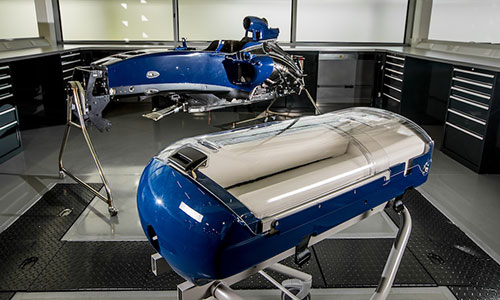Would you allow your newborn baby in a Formula One racing car? No way in hell. But in an ambulance? Of course.
Well, it turns out, thanks to Williams Advanced Engineering, these two contradicting modes of transportation are now not so different and are in fact sharing the same advanced tech design.
In collaboration with healthcare firm Advanced Healthcare Technology (AHT), the UK-based Williams F1 team are employing technology used in Formula One car´s bodywork to create a new device that keeps newborn babies safe during emergency transportation. Made from carbon fibre, the device known as the Babypod 20, provides 5 layers of protection including a protective shell which can withstand a 20 G-force crash. Lightweight and easy to handle, they are designed to attach to stretchers in ambulances, cars, and helicopters. It ultimately provides newborns with safe, secure, and temperature controlled transportation during an emergency.
According to the Uk´s Neonatal Transport Group, which specializes in the medical transporting of children, the need for this new technology could not come soon enough. From June 2016 to June 2017 there were 7,938 medical transfers of newborn children in the UK.
The pods are currently being used by the Uk’s Children’s Acute Transport Service at Great Ormond Street Hospital, London and are proving successful. The Williams team expects to make 500 Babypods in the first year of production.
As unlikely as it may seem that F1 tech teams are advising ambulances on safety innovations, these two vehicles have more in common than you think.
Nowadays the level of regulations that F1 cars undergo to ensure the utmost safety for the drivers is relentless. You only have to watch the clip of Kimi Raikkonen careening into a barrier at 150 mph during the British Grand Prix in 2014 and emerging unscathed, to realize how remarkably safe and strong a modern Formula 1 car is.
Although it would be inaccurate to compare the speed of a race car with that of an ambulance, both have the perilous job of hurtling around vehicles in the fastest yet safest way possible. Therefore why shouldn’t ambulances be using the same crash-protection structures equipped in an F1 driver’s cockpit?
Paul McNamara from Williams Advanced Engineering says “This challenge of providing a lightweight, strong pod to put infants in to be moved around is absolutely the same challenge, virtually, as we’re trying to tackle in the main chassis of a Formula 1 car,”
William´s team have previously applied their advanced technology and data in the F1 field to other broader areas of transportation. Race simulation expertise has been used at London Heathrow airport to improve aircraft movements on the ground and reduce time spent by planes in the air.
The parallels between a Formula One car and transport device for babies may not be immediately apparent, but with both in demand of lightweight and strong structure that keeps the passenger safe, monitoring vital signs, whilst remaining transportable, the advanced tech clearly fits for both.












